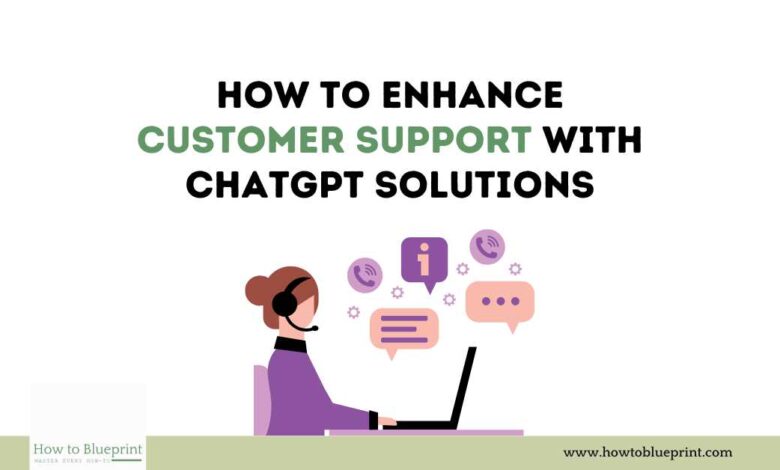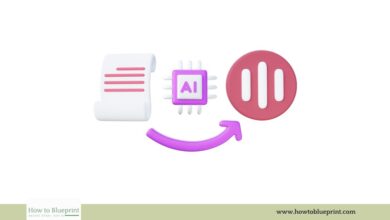
In today’s fast-paced digital world, customer support is a crucial aspect of any successful business. Customers demand quick, efficient, and effective solutions to their problems, and companies that can deliver on these expectations often stand out in competitive markets. With advancements in artificial intelligence (AI), particularly through tools like ChatGPT, businesses can significantly enhance their customer support capabilities. This comprehensive guide explores how ChatGPT solutions can revolutionize customer support, providing actionable insights and detailed strategies for implementation. Customer Support with ChatGPT.
The Importance of Customer Support
Customer support is a vital component of any business, directly impacting customer satisfaction, retention, and overall brand reputation. Effective customer support ensures that customers’ issues are resolved promptly and satisfactorily, fostering loyalty and encouraging repeat business. In an era where customers have numerous alternatives at their fingertips, the quality of support provided can be a significant differentiator.
The Role of AI in Customer Support
Artificial intelligence has transformed many industries, and customer support is no exception. AI-powered solutions can handle a vast number of customer interactions, providing instant responses and freeing up human agents to deal with more complex issues. AI tools like ChatGPT enhance efficiency, reduce costs, and improve the customer experience by delivering quick and accurate support.
Overview of ChatGPT
ChatGPT, developed by OpenAI, is an advanced language model that uses machine learning to generate human-like text based on the input it receives. It can understand context, answer questions, and engage in meaningful conversations, making it an ideal tool for enhancing customer support. ChatGPT can be integrated into various platforms, from websites to social media, providing seamless and consistent support to customers.
2. Understanding ChatGPT
What is ChatGPT?
ChatGPT is a state-of-the-art AI language model that leverages the GPT-4 architecture. It has been trained on diverse datasets, enabling it to understand and generate text in a way that mimics human conversation. This makes it incredibly versatile, capable of handling a wide range of tasks, from answering FAQs to assisting with complex problem-solving.
How ChatGPT Works
ChatGPT uses deep learning techniques to process and generate text. It analyzes the input provided by the user, identifies the context and intent, and generates a relevant and coherent response. The model continuously learns and improves from the data it processes, becoming more accurate and efficient over time.
Capabilities of ChatGPT in Customer Support
ChatGPT can perform a variety of functions within customer support, including:
- Answering Frequently Asked Questions (FAQs): Providing quick responses to common customer inquiries.
- Troubleshooting: Assisting customers with step-by-step solutions to technical problems.
- Order Processing: Helping customers place, track, and manage their orders.
- Personalized Recommendations: Suggesting products or services based on customer preferences and history.
- Handling Complaints: Managing customer complaints and escalating issues to human agents when necessary.
3. Customer Support with ChatGPT
Assessing Your Needs
Before implementing ChatGPT, it’s essential to assess your specific customer support needs. Consider the following questions:
- What are the most common types of inquiries your support team handles?
- How many customer interactions does your team manage daily?
- What are the peak times for customer support requests?
- What are the current pain points in your customer support process?
Understanding these factors will help you tailor the implementation of ChatGPT to address your unique requirements.
Integration Methods
ChatGPT can be integrated into your existing customer support infrastructure in various ways:
- Website Chatbots: Embedding ChatGPT into your website’s chat interface to provide instant support to visitors.
- Social Media Integration: Utilizing ChatGPT on platforms like Facebook Messenger, Twitter, and Instagram to engage with customers where they are most active.
- Customer Support Software: Integrating ChatGPT with customer support platforms like Zendesk, Freshdesk, or Salesforce to streamline operations.
- Mobile Applications: Adding ChatGPT to your mobile app to offer in-app support.
Training ChatGPT for Your Business
To ensure that ChatGPT delivers accurate and relevant support, it’s important to train the model on your specific business data. This includes:
- Customizing Responses: Tailoring responses to reflect your brand’s voice and tone.
- Knowledge Base Integration: Feeding ChatGPT with information from your knowledge base, FAQs, and product documentation.
- Continuous Learning: Regularly updating the model with new information and feedback to improve its performance.
4. Enhancing Customer Interaction
Personalized Customer Support
One of the significant advantages of ChatGPT is its ability to provide personalized support. By analyzing customer data and interaction history, ChatGPT can offer tailored responses and recommendations.
Example:
Customer Query: “I need help choosing a laptop for graphic design.”
ChatGPT Response: “Sure, I can help with that! For graphic design, you might want to consider a laptop with a high-resolution display, a powerful processor, and sufficient RAM. The [Brand X Model Y] is a popular choice among graphic designers. It has a 4K display, Intel i7 processor, and 16GB of RAM, making it perfect for running design software smoothly.”
24/7 Availability
Unlike human agents, ChatGPT can provide round-the-clock support, ensuring that customers receive assistance whenever they need it. This is particularly valuable for businesses with a global customer base, where customers might be in different time zones.
Example:
A customer in Tokyo might need support at a time when your human agents in New York are unavailable. ChatGPT can step in to provide immediate assistance, reducing wait times and improving customer satisfaction.
Multilingual Support
ChatGPT can communicate in multiple languages, making it an excellent tool for businesses operating in diverse markets. This capability ensures that language barriers do not hinder customer support, allowing you to serve a broader audience effectively.
Example:
Customer Query in Spanish: “¿Cómo puedo rastrear mi pedido?”
ChatGPT Response: “Para rastrear su pedido, visite nuestro sitio web y haga clic en ‘Rastrear pedido’. Luego, ingrese su número de pedido y podrá ver el estado de su envío.”
5. Efficiency and Productivity
Automated Responses
ChatGPT can handle repetitive and routine inquiries automatically, freeing up human agents to focus on more complex issues. This automation improves efficiency and ensures that customers receive prompt responses.
Example:
Customer Query: “What are your business hours?”
ChatGPT Response: “Our business hours are Monday to Friday, 9 AM to 6 PM. We’re closed on weekends and public holidays.”
Streamlining Repetitive Tasks
Tasks such as password resets, order tracking, and appointment scheduling can be easily managed by ChatGPT, reducing the workload on human agents and minimizing errors.
Example:
Customer Query: “I forgot my password. How can I reset it?”
ChatGPT Response: “No problem! To reset your password, please click on the ‘Forgot Password’ link on the login page and follow the instructions. You will receive an email with a link to create a new password.”
Reducing Response Times
ChatGPT can provide instant responses to customer inquiries, significantly reducing response times and enhancing the overall customer experience.
Example:
Customer Query: “Can you check the status of my order?”
ChatGPT Response: “Sure! Please provide your order number, and I will check the status for you.”
6. Improving Customer Satisfaction
Consistent Quality of Support
With ChatGPT, you can ensure a consistent quality of support across all customer interactions. The AI model adheres to predefined guidelines and best practices, minimizing variability in responses.
Example:
Regardless of which agent responds to a query, customers will receive the same level of detailed and helpful information, ensuring a consistent experience.
Handling High Volumes of Queries
During peak times or promotional events, the volume of customer inquiries can spike. ChatGPT can handle a high volume of queries simultaneously, ensuring that no customer is left waiting.
Example:
During a holiday sale, ChatGPT can manage numerous customer inquiries about product availability, shipping times, and discounts, providing timely responses and reducing the burden on human agents.
Gathering Customer Feedback
ChatGPT can facilitate the collection of customer feedback by prompting customers to rate their support experience and provide comments. This feedback can be valuable for continuous improvement.
Example:
ChatGPT Prompt: “Thank you for contacting us! We value your feedback. Could you please rate your support experience on a scale of 1 to 5 and share any comments you have?”
7. Advanced Features and Use Cases
Sentiment Analysis
ChatGPT can analyze the sentiment behind customer messages, helping businesses understand customer emotions and respond appropriately. Positive, negative, or neutral sentiments can be detected, allowing for more personalized and empathetic responses.
Example:
Customer Query: “I’m really frustrated with the delayed delivery of my order.”
ChatGPT Response: “I’m sorry to hear that you’re frustrated. I understand how important timely delivery is. Let me check the status of your order and see how we can resolve this issue as quickly as possible.”
Issue Escalation and Triage
ChatGPT can identify complex or sensitive issues that require human intervention and escalate them to the appropriate team. This ensures that critical problems are handled by experienced agents.
Example:
Customer Query: “I received a damaged product and need a replacement urgently.”
ChatGPT Response: “I’m very sorry to hear that you received a damaged product. I’m escalating your case to our support team, who will contact you shortly to arrange a replacement.”
Sales and Upselling Opportunities
ChatGPT can identify opportunities for sales and upselling during customer interactions, recommending relevant products or services based on customer preferences and behavior.
Example:
Customer Query: “I’m looking for a new phone. Do you have any suggestions?”
ChatGPT Response: “If you’re looking for a new phone, I recommend the [Brand X Model Y]. It has a high-resolution camera, long battery life, and comes with a special discount this week. Would you like to know more about it?”
8. Challenges and Solutions
Addressing AI Limitations
While ChatGPT is a powerful tool, it has limitations. It may not always understand complex queries or provide the perfect response. To mitigate these limitations:
- Continuous Training: Regularly update and train ChatGPT with new data and feedback to improve its accuracy.
- Human Oversight: Implement a system where human agents can review and correct AI-generated responses when necessary.
Ensuring Data Privacy and Security
Data privacy and security are paramount when using AI in customer support. To ensure compliance with regulations and protect customer data:
- Data Encryption: Use encryption to protect data during transmission and storage.
- Access Controls: Implement strict access controls to ensure only authorized personnel can access sensitive data.
- Regular Audits: Conduct regular security audits to identify and address potential vulnerabilities.
Managing Customer Expectations
Customers may have varying expectations when interacting with AI. To manage these expectations:
- Transparency: Clearly communicate to customers that they are interacting with an AI and provide options to speak with a human agent if needed.
- Set Boundaries: Define the scope of what ChatGPT can and cannot do, and set clear boundaries to avoid misunderstandings.
9. Measuring Success
Key Performance Indicators (KPIs)
To measure the success of ChatGPT in enhancing customer support, track the following KPIs:
- Response Time: The average time taken to respond to customer inquiries.
- Resolution Rate: The percentage of inquiries resolved by ChatGPT without human intervention.
- Customer Satisfaction: Feedback and ratings provided by customers after interactions.
- Cost Savings: Reduction in operational costs due to automation and increased efficiency.
Customer Satisfaction Metrics
Collect and analyze customer satisfaction metrics to gauge the effectiveness of ChatGPT:
- Net Promoter Score (NPS): Measures customer loyalty and willingness to recommend your brand.
- Customer Effort Score (CES): Assesses how easy it is for customers to get their issues resolved.
- Customer Satisfaction Score (CSAT): Captures overall satisfaction with the support experience.
Continuous Improvement Strategies
To ensure continuous improvement of ChatGPT:
- Regular Updates: Keep the AI model updated with the latest data and feedback.
- Monitor Performance: Continuously monitor performance metrics and make adjustments as needed.
- Customer Feedback: Actively seek and incorporate customer feedback to enhance the support experience.
10. Future Trends in AI-Powered Customer Support
Evolving Capabilities of ChatGPT
As AI technology continues to evolve, ChatGPT will become even more sophisticated, with improved natural language understanding, context awareness, and emotional intelligence. This will enhance its ability to provide nuanced and empathetic support.
Integration with Other AI Technologies
Future advancements will likely see greater integration of ChatGPT with other AI technologies, such as voice recognition, visual recognition, and augmented reality, providing a more comprehensive and immersive customer support experience.
The Future Landscape of Customer Support
The future of customer support will be heavily influenced by AI, with a shift towards more proactive and predictive support models. AI will anticipate customer needs and issues before they arise, providing preemptive solutions and further enhancing the customer experience.
11. Conclusion
Recap of Benefits
Implementing ChatGPT solutions in customer support offers numerous benefits, including:
- Improved Efficiency: Automated handling of routine tasks and inquiries.
- Enhanced Customer Interaction: Personalized and 24/7 support across multiple languages.
- Increased Customer Satisfaction: Consistent quality of support and reduced response times.
- Cost Savings: Reduced operational costs through automation and streamlined processes.
- Scalability: Ability to handle high volumes of queries without compromising quality.
Final Thoughts on Implementing ChatGPT
Incorporating ChatGPT into your customer support strategy can transform the way you engage with customers, providing them with faster, more accurate, and more personalized support. By leveraging the capabilities of ChatGPT, businesses can not only meet but exceed customer expectations, driving satisfaction, loyalty, and growth.
As AI technology continues to advance, staying ahead of the curve and continuously improving your customer support processes will be crucial. Embrace the potential of ChatGPT and discover how it can elevate your customer support to new heights.




